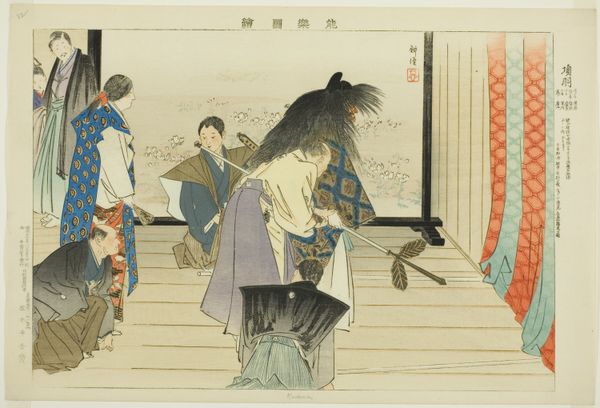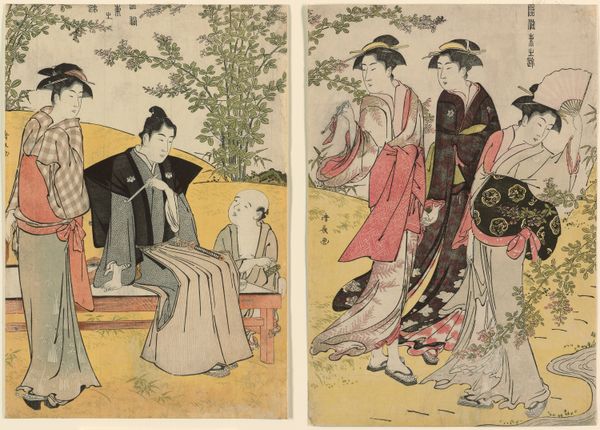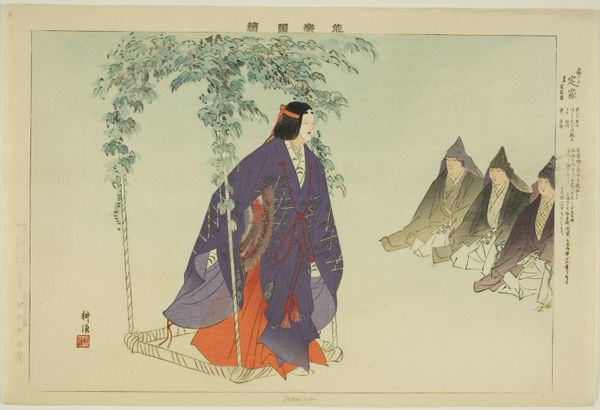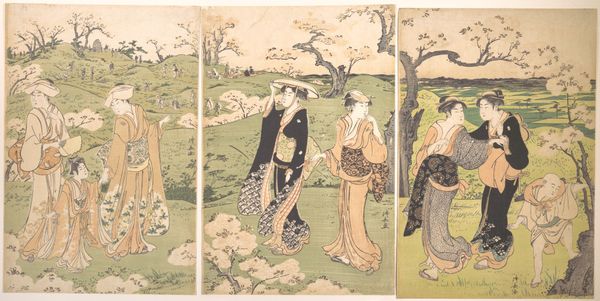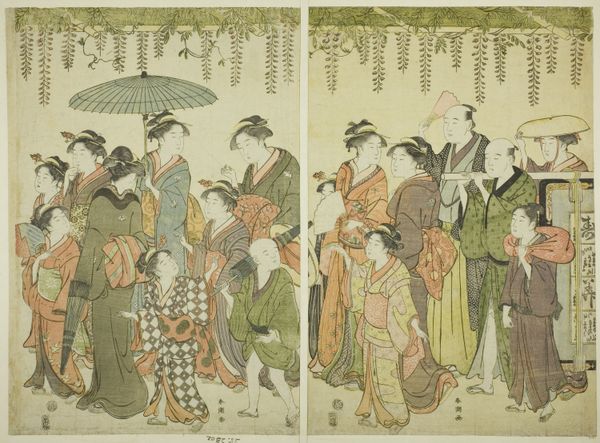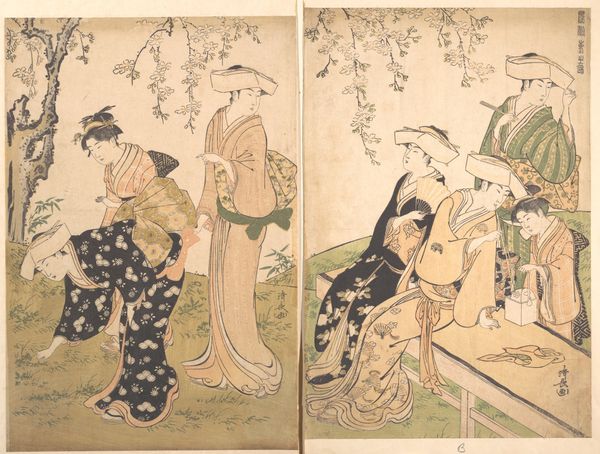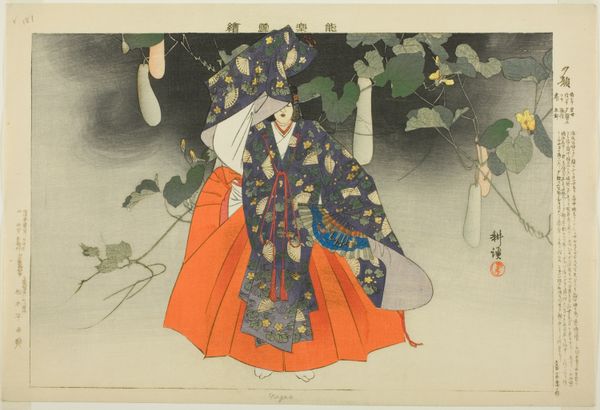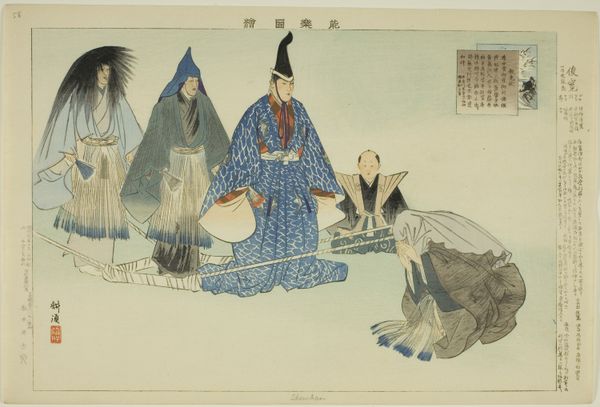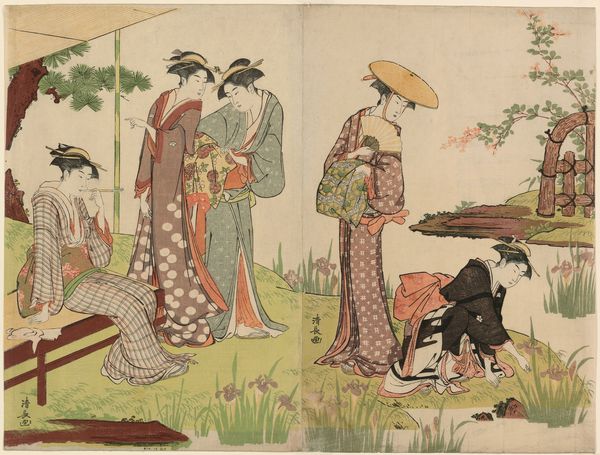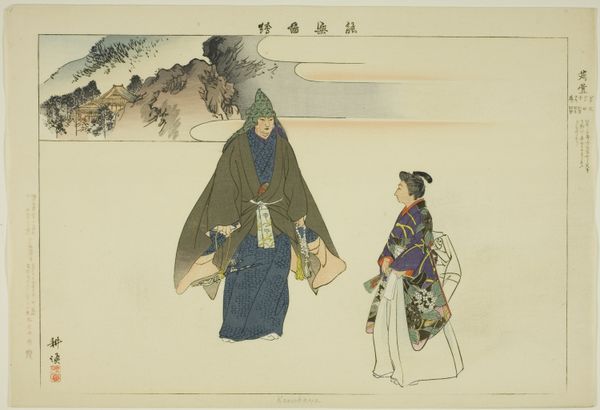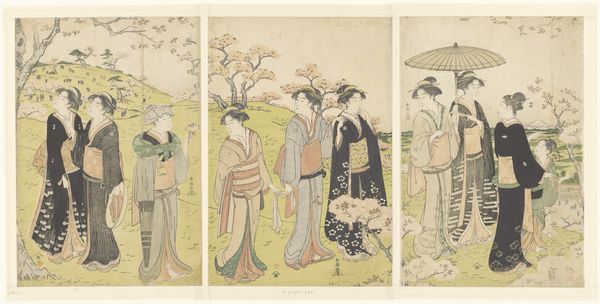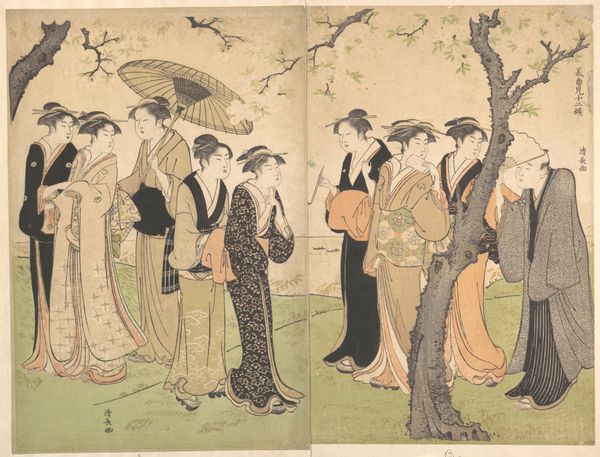
Roppo, from the series "Pictures of No Performances (Nogaku Zue)" 1898
0:00
0:00
Dimensions: Approx. 25.2 × 37.4 cm (10 × 14 4/3 in.)
Copyright: Public Domain
Editor: So, here we have "Roppo, from the series Pictures of No Performances (Nogaku Zue)", a print made in 1898 by Tsukioka Kogyo. It feels very serene, almost otherworldly. I am struck by the contrast between the figures in the foreground and the shadowy one hiding in the tree. How do you interpret this work? Curator: Ah, yes, serenity with an undercurrent! You’ve picked up on that beautiful duality. For me, this piece is about the ephemeral nature of performance and memory. Kogyo captures a moment from a Noh play—these aren't just portraits, they are echoes of a story unfolding. The figure nestled in the tree? I see that as the spirit of the play itself, watching its story materialize, or perhaps even fade. Do you feel that liminality as well? Editor: I do now! That idea of the "spirit of the play" makes so much sense with the ukiyo-e style. It feels like we're glimpsing something fleeting, a tradition in motion. But what is Roppo itself? Curator: Roppo refers to a dramatic exit or entrance in Noh theatre. Think of it as a theatrical punctuation mark, full of symbolic gestures. And it's worth noting that Kogyo wasn't just making pretty pictures; he was documenting and preserving this fading art form. So, we're not just looking at art, we are looking at history remembering itself! Does that change your perspective at all? Editor: Absolutely. I initially saw a static image, but now it feels alive with layers of meaning—performance, memory, history… even preservation. It's almost overwhelming. Curator: Isn't it wonderful how a single artwork can hold so much? Now, imagine what we'd see if we could hear the music and chants… that’s a rabbit hole for another day, though.
Comments
No comments
Be the first to comment and join the conversation on the ultimate creative platform.
